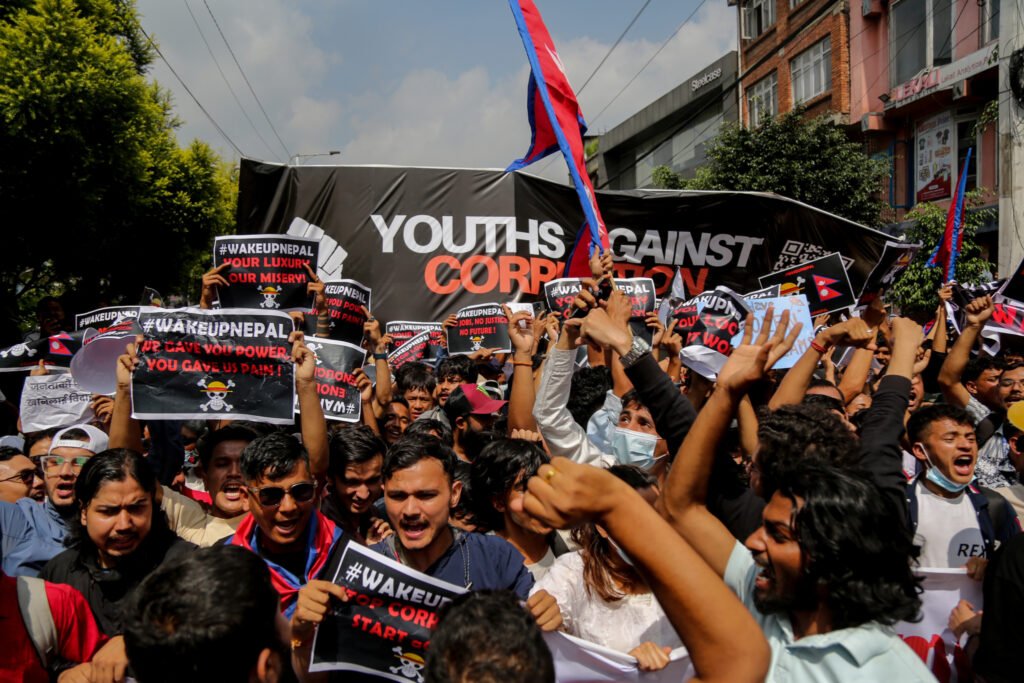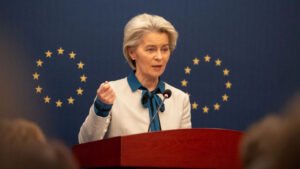Emre Kaya
Nepal, a small yet important country in South Asia due to its borders with India and China, has been occupying our agenda for some time. Following the social media ban and the surfacing of corruption allegations against politicians, protests broke out and the government led by the Communist Party of Nepal (Unified Marxist–Leninist) fell. Parliament was dissolved. After the government’s resignation, Sushila Karki, who had received the most votes from young people on a social media platform, was appointed prime minister by President Ram Chandra Poudel. Thus, Karki became the first female prime minister of the country. So what happened in Nepal? Can we say that the Nepalese Revolution has been drowned as a result of these events? In a country where a communist party was in power, will it now be the United States calling the shots?
A Brief History of Nepal: How Was the Monarchy Overthrown?
From 1951 onward, Nepal was ruled by a constitutional monarchy. In February 1996, the Communist Party of Nepal (Maoist Centre) launched an insurgency to abolish the monarchy. The party led by Pushpa Kamal Dahal put forward a strategy of an uprising encircling the cities from the countryside, igniting the struggle to eliminate the monarchy in Nepal.
Because of his leading role in the civil war, Dahal was nicknamed Prachanda (Fierce – Terrifying). His Nepal-centered contributions to scientific socialism were defined as Prachanda Path (The Prachanda Way). The path of his party was thus described as Marxism–Leninism–Mao Zedong Thought and the Prachanda Path.
In this uprising, which began in Nepal’s peripheral towns, the party established communist administrations in the areas it controlled and ultimately besieged the capital, Kathmandu. Unable to withstand this siege, the last king, Gyanendra, resorted to harsh measures, which instead of consolidating his authority left him in an even more difficult position.
When massive protests also erupted within the capital, the king reopened the parliament he had earlier dissolved. The parliament’s first act was to limit the king’s powers on June 10, 2006. In parallel, ceasefire negotiations began between the Nepalese government and the Maoist Centre. With guarantees such as the release of guerrillas and the right to participate in elections, an agreement was reached.
As a result of this process, with the Maoist Centre leading in parliament, the monarchy was abolished, and on May 28, 2008, the Federal Democratic Republic of Nepal was declared. Consequently, the last king, Gyanendra, left the country.
Crushing the Revolution with Egos
After the abolition of the monarchy, both the Communist Party of Nepal (Maoist Centre) and the Communist Party of Nepal (Unified Marxist–Leninist) received the majority of the people’s votes. In the 2008 elections, the two parties together captured about 50 percent of the vote. Following this election, Pushpa Kamal Dahal became prime minister and formed a coalition with the UML. But this government, founded on August 18, 2008, collapsed within a year. The UML, aligning with the Nepali Congress — a party closer to the United States — formed a government while excluding its former partner.
From the beginning of the Nepalese Revolution, the leaders of the Maoist Centre and the UML were in constant conflict. The reason was that the UML, having been active even under the monarchy, was an established force, whereas the Maoist Centre, though a later force, had become stronger than the UML. Here, leaders tried to prioritize their personal leadership rather than the ideas their parties represented.
Although the two parties later formed governments together again, their coalitions once more proved short-lived. This time, the Maoist Centre excluded the UML and formed a government with the social democrats. Unable to trust one another, these parties opened space for the Nepali Congress. In 2013, the Congress emerged as the leading party at the polls. The 2013–2017 parliamentary term was no different from the previous one. The UML and the Maoist Centre again attempted coalition governments, but none lasted longer than a butterfly’s life span.
After the 2017 elections, Nepal entered days of chaos. Madhav Kumar, a former UML leader who supported cooperation with the Maoist Centre, broke away with 20 MPs to form the Communist Party of Nepal (Unified Socialist). Thus, the UML lost significant strength. At the start of this period, the UML and the Maoist Centre had formed a coalition called the Left Alliance, but soon they became hostile to one another. It was claimed that the Maoist Centre had a hand in the UML’s split, and Kumar’s continual support for the Maoist Centre reinforced this claim. After this division, neither party could form a government without the Congress. Finally, in the 2022 elections, the two came together again, but their government failed to deliver. The UML and the Congress then formed a joint government — the very government overthrown by the recent protests.
In its short republican experience, the communist parties in Nepal fought more against each other than uniting, and ultimately reached a position where they could not form a government without the support of pro-American forces.
What Did the Gen-Z Protests Aim For?
The protests began after Prime Minister K.P. Sharma Oli of the UML announced a social media ban and videos allegedly showing the luxurious lives of certain politicians’ children spread. In fact, Oli did not ban social media overnight, as claimed. He only gave global social media companies a deadline to open offices in Nepal, or else be blocked. When they failed to do so, access was cut. Yet, in our country, this decision was presented as if it had been taken arbitrarily. As protests intensified, the social media ban was lifted. But this move could not prevent Oli’s downfall. He resigned. Parliament was dissolved. Nepal now lives in uncertainty.
At first, the character of the protests was unclear, as there was no leading force within them. Initially appearing as a youth initiative against corruption, the protests’ nature became clearer over time. The main currents that emerged were as follows:
- Supporters of feudal Hindu thought: Those who support Hindutva, a feudal Hindu ideology with followers also in India.
- Monarchists: Those seeking to restore the monarchy and re-crown the exiled King Gyanendra. Although initially appearing strong, they proved to pose little threat.
- Great Nepalis: Led by Kathmandu Mayor Balen Shah. They claim that parts of Indian territory historically belong to Nepal, which makes them potentially dangerous for the region. Through border disputes, they hold threatening potential toward both India and China.
Pay Attention to the Mayor of Kathmandu
From the very beginning, Kathmandu’s mayor, Balen Shah, supported the protests and now heads a dangerous bloc. Elected independently by surpassing the candidates of the Congress and the UML, Shah represents the “Great Nepal” idea, threatening Indian territory. The map he hung in his office showing northeastern Indian lands as belonging to Nepal provoked strong reactions. He also attempted to ban Indian films in the capital.
Shah, being a young rap singer, is popular among the youth. During the protests, he assumed a role resembling that of the youth’s representative. He acted as a bridge between the government and the youth. Before the army moved in, he ostensibly tried to calm the protests. He may become a widely heard name in the coming days.
Through Shah’s possible rise, it is clear that the United States will attempt to use Nepal both as a threat to China and as a stick against India. Yet Shah’s popularity may flare up like a straw fire and then fade away. For this reason, like all imperialist projects, he may cause some headaches but will eventually collapse.
Trusting in Nepal’s Accumulation
Looking at all this collectively, while uncertainty currently prevails in Nepal, one must trust the accumulation of communist parties since the monarchy, and the democratic understanding that overthrew the monarchy. Despite all these crises and disagreements, Nepalis did not abandon the UML and the Maoist Centre. They offered them power many times. Yet, because these parties could not overcome their egos and reconcile, they opened space for pro-American politics, creating today’s uncertainty.
Thus, it would be premature to say that the United States has won. What is expected from the new prime minister, Karki, is to convene parliament as soon as possible and call elections. In these elections, the people may heavily punish the UML. They may even hold the Maoist Centre accountable for failing to cooperate. Yet it is evident that Nepal, which won its rights through struggle and blood, will not turn away from its path of democracy, independence, and fair sharing.
Source: https://www.aydinlik.com.tr/haber/gen-z-protestolari-kimi-devirdi-nepalde-abd-mi-kazandi-547138
Abroad Africa AI Beijing Belt & Road BLCU BRICS China chinese CPC CSC Culture Economy education EU Guizhou Kültür Langauge movie Multipolarity Russia scholarship science Shanghai Sino Sino Turkish Sino Turkish Sino Turkish Sino Turkish Sino Turkish Studies Sino Turkish Studies Sino Turkish Studies Sino Turkish Studies space Syria Taiwan Tariff trump Turkiye Türkiye University USA Xinjiang ZJUT Çin





